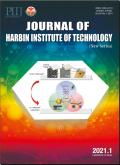Microwave Induced Ethanol Bath Bonding for PMMA Microfluidic Device
Q4 Engineering
Journal of Harbin Institute of Technology (New Series)
Pub Date : 2016-02-25
DOI:10.11916/J.ISSN.1005-9113.2016.02.006
引用次数: 0
Abstract
High bonding strength, low deformation and convenient procedure are all very important aspects in the microfluidic device fabrication process. In this paper, an improved microwave induced bonding technology is proposed to fabricate microfluidic device based on methyl methacrylate (PMMA). This method employs pure ethanol as the bonding assisted solvent. The ethanol not only acts as the microwave absorbing material, but also works as the organic solvent in bath. The presented research work has shown that the bonding process can be completed in less than 45 s. Furthermore, the convenient bonding only applies microwave oven, beakers and binder clips. Then, we discuss effects of microwave power, bonding time on bonding strength and deformation of microstructures on PMMA microfluidic device. Finally, a 4 layers micro-mixer has been fabricated using the proposed bonding technique which includes 15 trapezoid micro-channels, 9 T-type mix units and an X-type mix unit. Experimental results show that the proposed bonding method have some advantages compared with several traditional bonding technologies, such as hot pressing bonding, ultrasonic bonding and solvent assisted bonding methods in respect of bonding strength, deformation and bonding process. The presented work would be helpful for low coat mass production of multilayer polymer microfluidic devices in lab.微波诱导乙醇浴键合PMMA微流控装置
结合强度高、变形小、工艺方便是微流控器件制造工艺的重要方面。本文提出了一种改进的微波诱导键合技术,用于制备基于甲基丙烯酸甲酯(PMMA)的微流体器件。该方法采用纯乙醇作为键合辅助溶剂。乙醇不仅可以作为微波吸收材料,还可以作为有机溶剂。研究表明,该键合过程可在45 s内完成。此外,方便的粘接只适用于微波炉,烧杯和活页夹。然后讨论了微波功率、键合时间对PMMA微流控器件的键合强度和微结构变形的影响。最后,利用所提出的键合技术制备了一个4层微混合器,该混合器包括15个梯形微通道、9个t型混合单元和一个x型混合单元。实验结果表明,该方法在粘接强度、变形和粘接过程等方面均优于热压粘接、超声粘接和溶剂辅助粘接等几种传统粘接技术。为多层聚合物微流控器件的实验室低涂层量产提供了理论依据。
本文章由计算机程序翻译,如有差异,请以英文原文为准。
求助全文
约1分钟内获得全文
求助全文
来源期刊

Journal of Harbin Institute of Technology (New Series)
Engineering-Engineering (all)
CiteScore
0.50
自引率
0.00%
发文量
2515
 求助内容:
求助内容: 应助结果提醒方式:
应助结果提醒方式:


